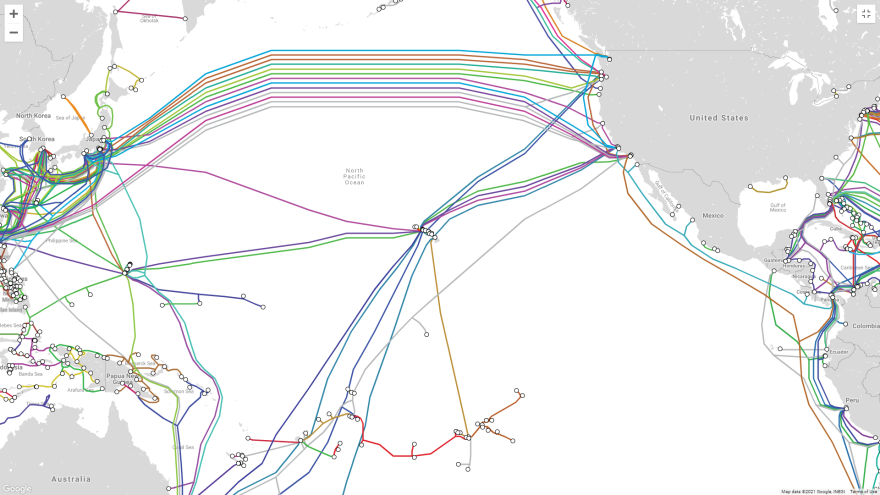Technological advances allow the next generation of undersea fiber optic cables to traverse the Pacific without stopping in Hawaii.
We have all experienced the distorted garble of a video call gone wrong in the past year, or perhaps endless buffering on a popular streaming app.
Applications like video calls and streaming require a lot of bandwidth and high usage stretches existing capacity.
Expanding that capacity in an isolated place like Hawaii is not easy. Internet reaches the Hawaiian Islands and other far flung corners of the world predominantly through undersea cables.
Those fiber optic pipelines crisscross the globe, connecting major continental cities and remote island outposts.
For a while that system has worked to Hawaii’s advantage. Sitting almost dead center in the Pacific, the Hawaiian Islands were an ideal location for trans-oceanic cables to make landfall and connect.
But coming up for air is no longer necessary according to Burt Lum, Broadband Strategist for the State of Hawaii, and host of Bytemarks Café on HPR.
“Because of technology a lot of these transpacific fiber cables can actually bypass Hawaii,” Lum said in an interview.
He notes that major cable projects being developed by internet giants like Amazon, Google, and Facebook, they will actually look at transpacific cables that go direct from Asia to the West Coast of North America, without even considering a landing in Hawaii.
In fact it is now cheaper to skip Hawaii altogether, and many cables already do. With only 1.4 million residents, the Hawaii market is not large enough to justify the extra cost of a cable landing.
Losing access to new cables delivering faster connectivity could seriously inhibit Hawaii’s future economic growth.
With the next generation undersea cables already in development, Lum says enticing builders to land in Hawaii will require government investment in land-based broadband infrastructure.
“If they’re coming through to Hawaii, is there a way we could have this infrastructure ready to land in? That would accommodate their connection into Hawaii,” he explained.
Publicly funded cable landing sites could be analogous to how state-operated airports and harbors make physical commerce possible.
However, building that infrastructure is not easy or cheap. It essentially requires boring a tunnel under the ocean floor that allows a cable to come ashore and then connect into the local grid.
“All that requires surveys, it requires permits, it requires rights of way, it requires technical engineering to design the process,” Lum notes.
If such infrastructure is not built with public funds, and a private sector company decides the extra cost is not worth accessing the Hawaii market, cable developers may opt to bypass the islands entirely.
One major project that might have landed in Hawaii has already opted to skip us.
The Government of Chile announced last summer that a planned cable connecting South America to Asia will make landfall in New Zealand rather than passing by Hawaii.
So far, the State Legislature has not approved any funds for broadband expansion. Burt Lum say he is now looking at how federal money could be used instead.



